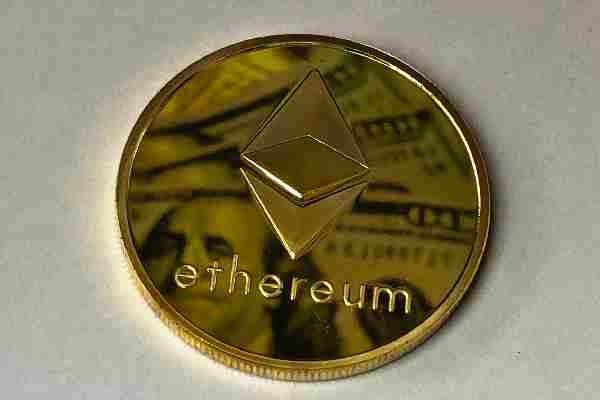Ethereum is the network behind the blockchain-based cryptocurrency Ether. A blockchain resembles a bank’s record of transactions. Obviously, you really need to trust your bank to keep this record of transactions exact and up-to-date.
With cryptocurrency, you do not have to trust a single entity. You basically trust the open-source, peer-reviewed code. It’s anything but a coincidence that the first blockchain-based digital currency was made after the 2008 financial crisis!
To guarantee that nobody swindles the system and that everybody just spends their Ether coins once, particular computer systems secure the network. These systems are known as miners.
At the point when you broadcast a transaction to the Ethereum network, the miners check that the standards of the network are kept and that the sending address has the important number of ETH coins to make the transaction.
The miners then group transactions into blocks. To add another block to the network, miners should figure a string of characters that is unique to the block.
This series of characters is known as the block’s “hash”. Each block contains the hash of the past block, as need might arise to be speculated by the miners. By including the past block’s hash, the miners can make sure that the transaction contained in a particular block did without a doubt come after those that probably went before it. This arrangement (or chain) of blocks is known as the blockchain.
When one of the network’s miners surmises the hash of the block they are attempting to add, it is added to the blockchain. This process of speculating is classified as “proof-of-work”. It’s the absolute most significant security element of blockchain-based cryptocurrencies.
What is an Ethereum Mining Rig?
Contents
You can mine Ethereum on a basic gaming computer. Nonetheless, to make it as proficient as possible, you can construct a unit whose main intention is to mine Ethereum.
This requires some investment and isn’t especially cheap. However, it implies that you are mining Ethereum considerably more proficiently than if you were simply using a standard computer system.
An Ethereum mining rig (as these reason constructed units are called) are across the board computer systems that have been designed and worked to mine Ethereum (or other cryptocurrencies).
The main parts of an Ethereum mining rig are the power supply unit and the GPUs themselves. GPU represents the graphics processing unit. Gives high-end gaming computers the capacity of running the fantastic graphics of modern computer games. They’re likewise perfect for making many conjectures at the hashes of Ethereum blocks in as short a period as could really be expected.
Ethereum mining rigs normally have no less than two of these GPUs. Be that as it may, they can house some more. The number you choose to go for will rely upon your financial plan for building your mining rig. Obviously, the more GPUs you have, the bigger (and more costly) the power supply should be. On top of this, you will require a lot more extra parts to make the situation work.
What You Will Need to Build an Ethereum Mining Rig?
Before building yourself an Ethereum mining rig, you will need the following:
- Ethereum mining hardware
- Ethereum mining software
- Materials to rig
Ethereum Mining Hardware:
There are loads of various GPUs that you can browse while assembling your own Ethereum mining rig. The most famous makers are AMD and NVIDIA.
Any GPU will be able to mine Ethereum.
Ethereum Mining Software:
As the options for mining hardware, there is no deficiency of software choices to mine Ethereum on. This guide isn’t exactly about selecting the best mining software there however, so we will keep it brief.
In the event that you don’t know what we mean when we say mining software, a program that connects your Ethereum mining rig to the Ethereum network.
Mining Rig Equipment:
Before you begin fabricating your Ethereum mining rig, make sure that you have every one of the parts and tools underneath. The entire get together process shouldn’t require over an hour so in the event that you can have all that you really want before you start building, you’ll be going in the blink of an eye.
To construct your Ethereum mining rig, you will require the accompanying:
- Angled aluminium lengths (5×24″, 8×14″)
- Wooden blocks (3x 1″x1″)
- Power supply unit fit for driving every one of the parts
- Motherboard
- Self-tapping screws
- Screwdriver
- Ethernet cable
- Zip ties
- Power switch
- Blank USB stick
- Ethernet cable
- Computer
- Computer monitor
- Power Cables
- RAM (Random Access Memory)
- CPU (Central Processing Unit)
- Heatsink fan
- Powered risers
- GPU (Graphics Processing Unit)
- Powered drill

How to Build Your Mining Rig
Step 1: In the first place, you should screw the 14″ angled aluminium together to make two squares. For this, you will use your drill and self-tapping screws.
Step 2: Then, you interface the two aluminium squares utilising the more extended aluminium angles. Once again, use the drill and screws to make sure it’s all quite strong. You ought to now have a steel frame that is a cuboid in shape.
Step 3: You now need to use the last longer aluminium angle as a crossbar to hold your GPUs set up. This needs to be connected around 3-4″ in from the edge of your mining rig frame.
Step 4: The next step is to add the wooden blocks to the lower part of the frame (on the contrary side that your crossbar is).
Step 5: Add three wooden blocks using your motherboard as a guide to where you really want to put the blocks.
Step 6: You want the motherboard to fit perfectly inside the frame so add one block near the edge of the frame and a subsequent where the contrary edge of the motherboard will sit. The third block needs to be set in these.
Building the Computer Itself
Step 1: Now that the frame is prepared, you want to add the motherboard itself. This time use the screwdriver and self-tapping screws. This ought to prevent you from harming the motherboard while fixing it.
Step 2: You next need to add the computer processor to the motherboard. Cautiously remove it from the protective packaging you got it in and delicately put it in the central processor case on your motherboard. It is significant not to contact the motherboard or base of the computer chip. Oil from your fingers could harm these touchy parts. When the computer chip is set up, secure it with the cover on the motherboard.
Step 3: The next step is to add the heatsink for the computer chip. Place this over the central processor and plug the 4-pin connector in that is close to the computer chip itself.
Step 4: Following this, now is the ideal time to add the RAM to the mining rig. Take the stick of RAM and put it in the pertinent situation on the motherboard. It needs to be genuinely clear where this goes. In any case, in the event that it is not, actually take a look at the motherboard’s client manual. It could take a force of power to adjust the RAM accurately.
Adding the Power Supply Unit
Step 1: Now you will need to add the power supply to the unit. Place the power supply unit close to the motherboard in the frame. There should be a 24-pin opening (primary power input) and a 8-pin space (for the computer processor) on the motherboard. Use your power cables to connect the motherboard to the power supply unit.
Step 2: Next up is adding the controlled risers. These are used to connect the motherboard to the GPUs. Since they are powered risers, they likewise need connecting with the power supply unit. Use more power cables to connect these to the power supply unit.
Step 3: On your powered risers, there ought to be a USB link that prompts a chip. These chips should be connected to the relevant position (PCI-E slots) on the motherboard. Once more, use the manufacturer’s guide to view these as in the event that you do not know where they need adding.
Adding the GPUs
Step 1: It is now time to add the main part of your cryptocurrency mining rig — the GPUs. You want to take each GPU and plug every one of the controlled risers into them. There will be a slot on each GPU that the riser fits flawlessly into.
Step 2: Then, connect each GPU to the power supply unit. Use more power cables to do this. There ought to be some 8-pin link slots towards the highest point of each GPU for your links. Be mindful so as to make sure every one of the links go inside the framework or it will look chaotic!
Step 3: Following this, you should drape the GPUs in the frame. At this point, your frame ought to look fairly jumbled with parts, so we need to add the GPUs in the space at the highest point of the frame. You can use the zip ties to balance your GPUs on the even aluminium lengths at the highest point of the frame. You don’t need them excessively near one another. Attempt to space them around 6″ aside from each other.
Step 4: The last part to add is the power switch. Plug the power switch into the motherboard.
Taking Care of the Software
Step 1: On your computer download the Ethereum mining software you need to use and add it to your USB stick.
Step 2: Plug the USB stick into the USB drive on the motherboard and plug the ethernet link into the ethernet link cable on the motherboard. Plug the opposite end into your internet’s switch. Plug the screen in and connect it to the motherboard as well.
Powering Up Your GPU Mining Rig
Step 1: Turn the power supply on and use your power change to turn the motherboard on. In the event that you connected everything accurately, the GPU fans ought to begin to turn, and you might see the software begin to run on the screen.
Step 2: What amount of time it requires to mine an Ethereum block will rely upon the number and force of your GPU units. All you really want to do currently is sit back, unwind, and trust that your money will come in!
With that, we have now come to an end to our guide. We hope it helps you in learning everything about Ethereum mining rigs.



Reviews